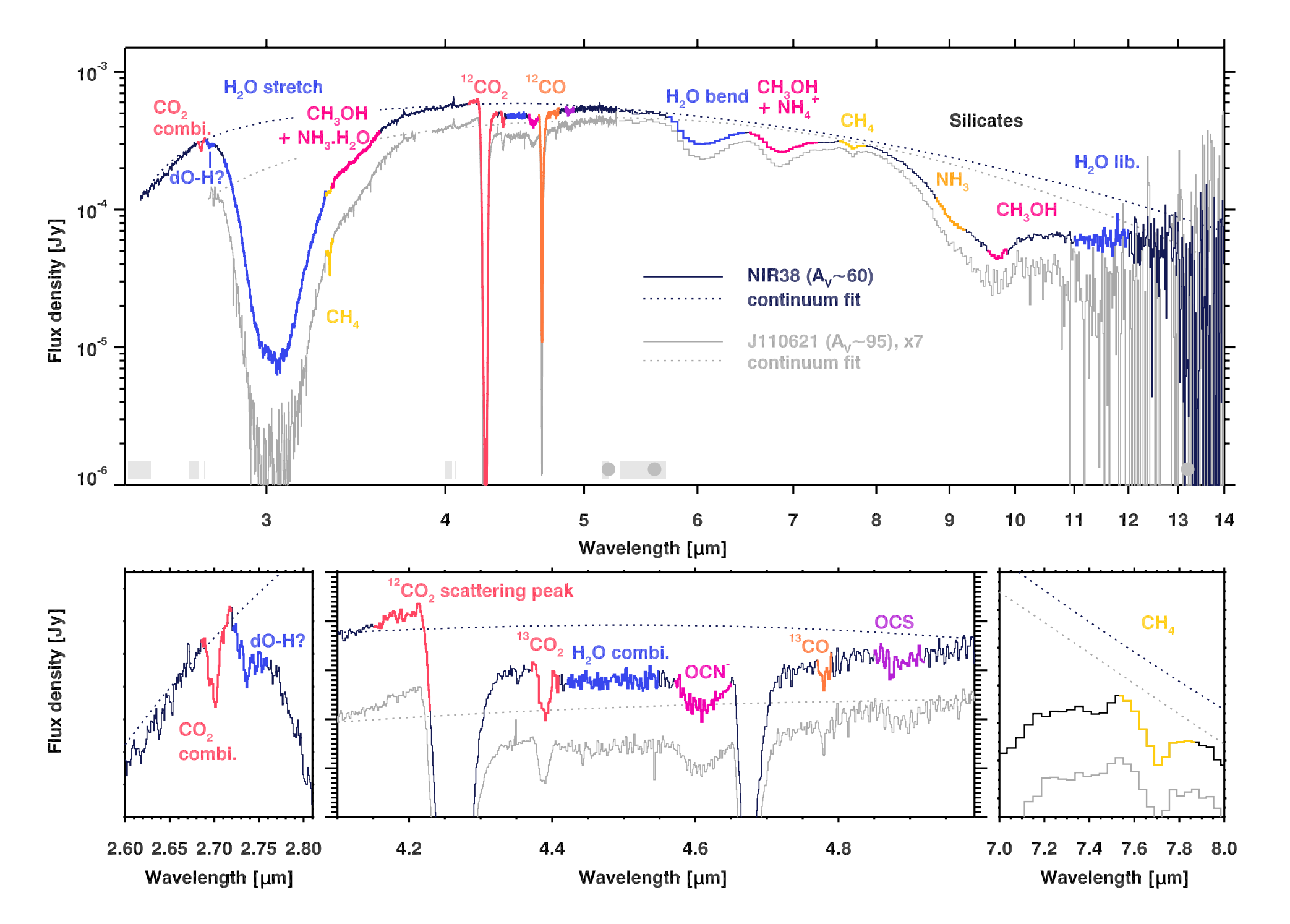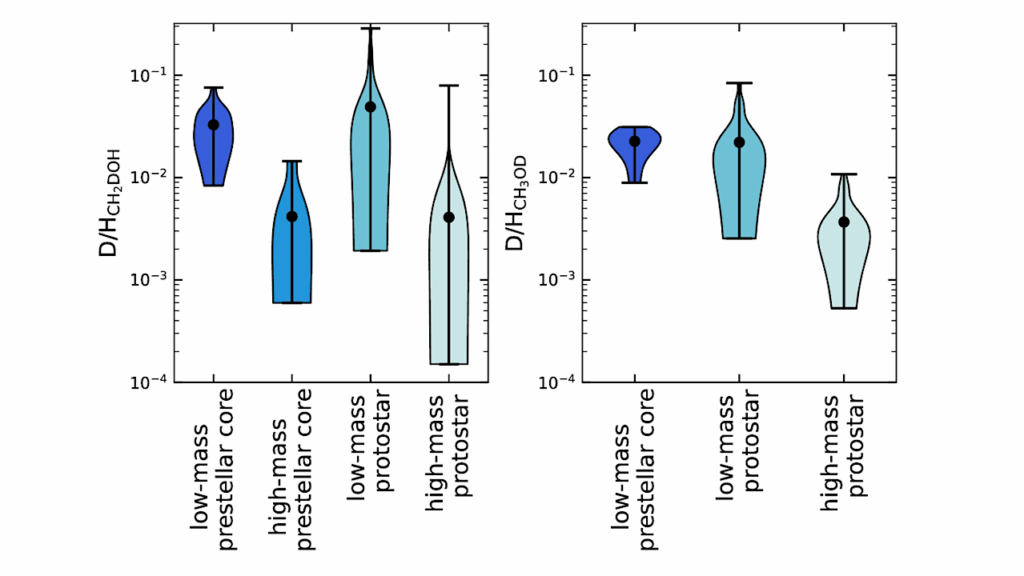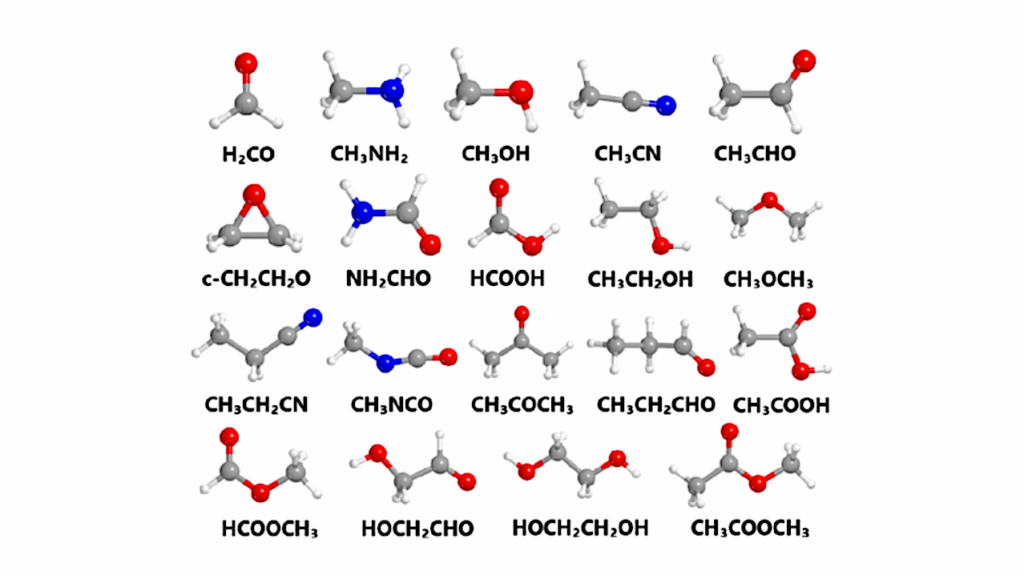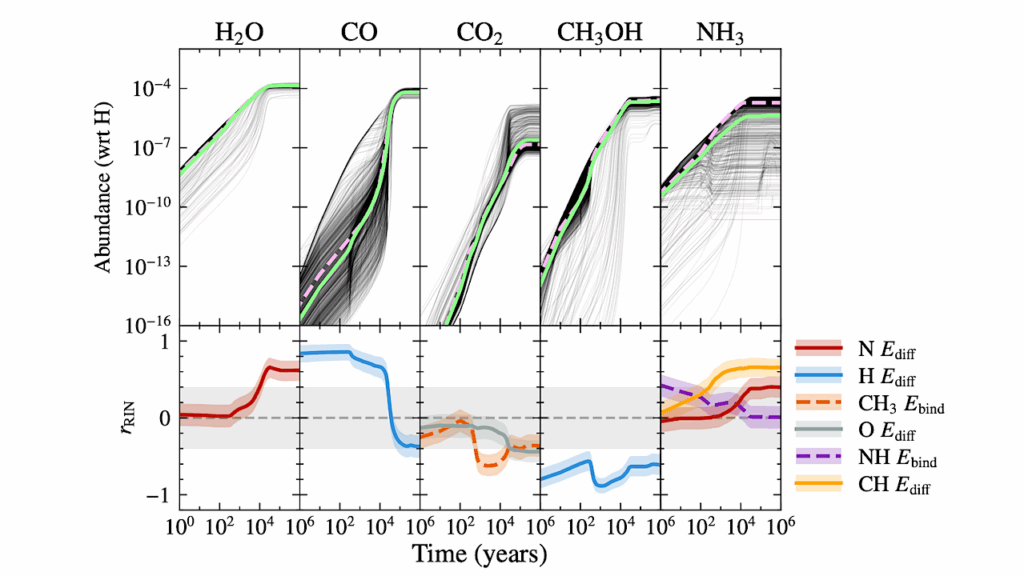An Ice Age JWST Inventory Of Dense Molecular Cloud Ices

Icy grain mantles are the main reservoir of the volatile elements that link chemical processes in dark, interstellar clouds with the formation of planets and composition of their atmospheres.
The initial ice composition is set in the cold, dense parts of molecular clouds, prior to the onset of star formation. With the exquisite sensitivity of JWST, this critical stage of ice evolution is now accessible for detailed study.
Here we show the first results of the Early Release Science program “Ice Age” that reveal the rich composition of these dense cloud ices. Weak ices, including, 13CO2, OCN−, 13CO, OCS, and COMs functional groups are now detected along two pre-stellar lines of sight. The 12CO2 ice profile indicates modest growth of the icy grains.
Column densities of the major and minor ice species indicate that ices contribute between 2 and 19% of the bulk budgets of the key C, O, N, and S elements. Our results suggest that the formation of simple and complex molecules could begin early in a water-ice rich environment.
M. K. McClure, W. R. M. Rocha, K. M. Pontoppidan, N. Crouzet, L. E. U. Chu, E. Dartois, T. Lamberts, J. A. Noble, Y. J. Pendleton, G. Perotti, D. Qasim, M.G. Rachid, Z.L. Smith, Fengwu Sun, Tracy L Beck, A. C. A. Boogert, W. A. Brown, P. Caselli, S.B. Charnley, Herma M. Cuppen, H. Dickinson, M. N. Drozdovskaya, E. Egami, J. Erkal, H. Fraser, R. T. Garrod, D. Harsono, S. Ioppolo, I. Jimenez-Serra, M. Jin, J. K. Jørgensen, L. E. Kristensen, D.C. Lis, M. R. S. McCoustra, Brett A. McGuire, G.J. Melnick, Karin I. Oberg, M. E. Palumbo, T. Shimonishi, J.A. Sturm, E.F. van Dishoeck, H. Linnartz
Comments: To appear in Nature Astronomy on January 23rd, 2023. 33 pages, 16 figures, 3 tables; includes extended and supplemental data sections. Part of the JWST Ice Age Early Release Science program’s science enabling products. Enhanced spectra downloadable on Zenodo at the following DOI: https://doi.org/10.5281/zenodo.7501239
Subjects: Astrophysics of Galaxies (astro-ph.GA); Earth and Planetary Astrophysics (astro-ph.EP); Solar and Stellar Astrophysics (astro-ph.SR)
Cite as: arXiv:2301.09140 [astro-ph.GA] (or arXiv:2301.09140v1 [astro-ph.GA] for this version)
Related DOI:
https://doi.org/10.1038/s41550-022-01875-w
Focus to learn more
Submission history
From: Melissa McClure
[v1] Sun, 22 Jan 2023 15:28:37 UTC (6,950 KB)
https://arxiv.org/abs/2301.09140
Astrobiology








